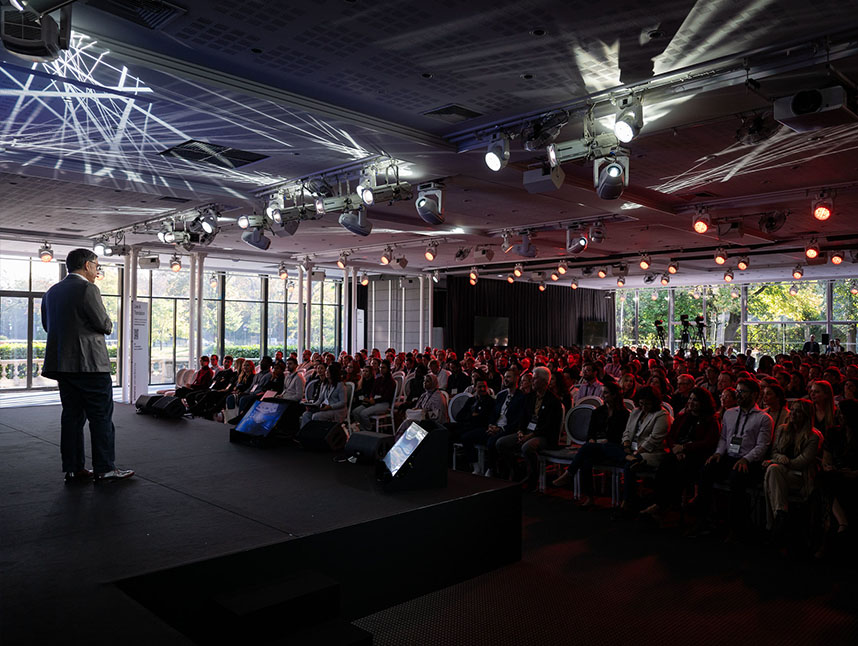How media professionals in Germany can use the key findings of the Reuters Digital News Report 2024
The internet is overtaking linear television as the most important source of news. Younger target groups mainly use social media to consume news. The importance of online news videos is growing. These and other findings from this year's Digital News Report by the Reuters Institute show what keeps news consumers in Germany busy. You can find out how media professionals can use the findings here.
The Reuters Institute's Digital News Report focuses on current challenges and dilemmas facing news media publishers worldwide, as well as public opinion on the subject. In January and February of this year, more than 95,000 people in 47 global markets were surveyed.
The Leibniz Institute for Media Research | Hans Bredow Institute has been responsible for the German part of the study since 2013, with the support of the state media authorities and ZDF. The most important results of the Reuters Institute's Digital News Report for the German market are summarized in this article. Find out more about how news producers can react to and use the findings of the report.
Reduce news fatigue
41% of respondents to this year's report stated that they are exhausted by the amount of news available today. In comparison: in 2019, when the question was last asked, this figure was 26%. In the youngest age group, this figure is highest in 2024 at 51%.
News fatigue among respondents has also increased. 14% of adult internet users actively try to avoid news, while 69% do so occasionally. Both percentages have risen by four percentage points compared to the previous year.
Various strategic approaches can be taken to counteract news fatigue. These make it possible to make news consumption more positive and the content more accessible.
- Strive for balance: Publishing a more even mix of positive and negative news. Success stories can create a balance, while solution-oriented content is motivating for news consumers.
- Provide summaries: Make individual articles or the most important news of the day available in short, easy-to-consume formats. Counteract information overload with compact message formats.
- Personalization: Customization of the news feed based on interests and topics selected by users. User-defined notifications allow you to make even more precise choices when it comes to receiving messages.
Counteracting skepticism towards AI in journalism
The use of artificial intelligence in journalism is largely met with scepticism by respondents in 2024. 52% of adult internet users in Germany have read or heard a lot about artificial intelligence. However, every second person feels uncomfortable using news if it has been produced mainly by AI and with some human supervision. In contrast, 36 percent of respondents feel comfortable using such news. Younger respondents tend to be more open to AI news than older respondents.
The use of AI offers many advantages for editorial teams, but is sometimes met with skepticism by news consumers. Media professionals can counter this skepticism with various measures:
- Raising awareness: Transparent communication about the use and role of AI can avoid misunderstandings and mistrust.
- Quality assurance: Communicate and, above all, ensure editorial control when creating content using AI.
- Ethics guidelines: Development and publication of ethics guidelines for the use and use of AI in news production show a sense of responsibility.
- Communicating the benefits for users: Educating news consumers about the benefits of using AI can promote acceptance and understanding.

Meeting the demand for digital news offerings with a strong online presence
67% of adult internet users in Germany use digital news services on websites, in apps or on social media at least once a week. Traditional linear television is used by 60 percent.
In 2024, the internet will be the most important news source for the adult online population in Germany for the first time, narrowly overtaking television. 42% of respondents cite the internet as their main source of news, while 41% prefer television.
Most adult internet users search for specific articles or reports by going directly to a news website or app (32 percent) or typing the name of a website into a search engine (29 percent).
The increased demand for digital news offerings requires a strong online presence. The path to this can include various options.
- Strengthen online presence: User-friendly and fast websites and app (s) make content more easily accessible to users online. SEO measures also increase visibility.
- Multimedia coverage: Interactive content such as surveys and graphics, videos, live streams or podcasts appeal to a wider audience.
- Mobile-first strategy: Optimizing news content for mobile devices using news apps and a developed mobile-first strategy to reach users in the digital space.

(Further) develop social media strategy and produce more video
The proportion of respondents who mainly consume news via social media has risen continuously over time. In Germany, this applies to 15 percent of respondents, with the proportion among 18 to 24-year-olds being the highest at 35 percent. For 16% of this age group, social media is even the only source of news. With a weekly reach of 34%, social media is ahead of other online sources.
Social media is also the preferred access to news for the younger target group. 37% of respondents between the ages of 18 and 24 are most likely to find news sources via social media. For 27 percent of this age group, social media is the most important way to find online news.
The focus on moving image content on certain social media platforms is particularly important for the youngest target group. 27% of 18 to 24-year-olds regularly come into contact with news via Instagram, followed by YouTube with 24% and TikTok with 13%. This age group mainly consumes online news videos on these third-party platforms.
Adult respondents also consume online news videos, at least once a week, at 49%, just under half of the Germans surveyed. Around a third of respondents (34%) regularly consume news videos that are longer than a few minutes. For 26% of online news video users, the platform of a news provider is the most frequently used channel, followed by YouTube with 23%.
News producers can use the shift to social media with various strategies.
- Presence on major social media platforms: It is worthwhile for news producers to use the variety of the most popular platforms and expand their presence there. For the younger target group, these include Instagram, YouTube and TikTok. The various platforms require specific strategies and platform-appropriate formats.
- Target group-specific content: The target group of 18 to 24 year olds differs from older target groups in terms of their media usage behavior and interests. These differences should be considered when creating content.
- Production of online news videos: Quick and concise delivery of news in short videos to match consumer behavior on Instagram or TikTok. Create longer videos on complex topics that are presented in more detail and provide a deeper understanding of news stories. News summaries in longer video formats. This is in line with usage behavior on YouTube. Development of series formats promotes recognition and audience loyalty.
Strengthening trustworthiness in messages on social media
The results of the survey show that messages on social media tend to be viewed skeptically. This is particularly true of TikTok, where 41% of users have difficulty distinguishing between trustworthy and untrustworthy messages.
Respondents have fewer concerns about news received via WhatsApp or Google search. Overall, 42% of adult respondents in Germany express concerns about whether they can trust online news media and whether they can distinguish false reports from facts (comparison 2023: 37%).
For those surveyed, trust in news media depends above all on whether it is communicated transparently how news is created. This is important for 74 percent of respondents. Other important factors are high journalistic standards (72%), unbiased reporting (65%) and fair representation of "people like me" (65%). Less important for trust are the long history of a news medium or overly negative reporting.
Media professionals can strengthen the trustworthiness of news on social media by:
- Transparency: Disclosure of sources, transparent communication about errors and corrections, fact-checking and reference to journalistic standards add depth to reporting and create trust.
- Fostering media literacy: Content that helps news consumers identify trustworthy sources and fake news.
- Community building: Interactive formats and moderated discussions promote exchange and strengthen user trust. By collecting and implementing feedback, media professionals show interest and responsiveness.

Conclusion on the Digital News Report 2024
This year's Digital News Report from the Reuters Institute shows current developments in digital news consumption. The differences between the media usage behavior of the young target groupand older respondents in Germany are particularly clear. At the same time, the report points to similarities across all age groups, such as the increasing importance of social media. The expansion of digital strategies and multichannel publishing continue to be immensely important for media professionals.
With Purple, our AI-based digital publishing platform specifically for publishers, we accompany you on your digital transformation journey. For more information or if you are interested in our product, please contact us.






%201.svg)











